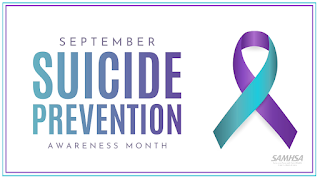The Impact of School Breaks on students living in Poverty : The Achievement Gap
As we come to another long break for the holidays everyone is looking forward to relaxing at home and spending time with loved ones. Unfortunately, we know this is not true for many of the students that we work with and serve. It is especially important during this time that we are aware of the words we use and behaviors we exhibit around our students. Many of the ones who live in poverty find comfort and safety in school that they do not have at home. Below is important information provided by Michelle McDonald written for the NASP publication (Volume 41 Issue 7). Also below the information are important resources/ contact information to help our students in need.
The Impact of School Breaks on Students Living in Poverty
By Michelle McDonald
Summer and winter breaks from school can be highly anticipated times for students and educators. However, for students living in poverty, the break from school can bring hidden challenges that school psychologists should be aware of when preparing for vacation. Research has shown that school breaks affect students from varying socioeconomic status (SES) levels differently, causing a widening gap in achievement between students living above and below the poverty line (Entwisle, Alexander, & Olson, 2005; Evans, 2005; Borman, Benson, & Overman, 2005). To compound this academic divide, students living in poverty have been shown to be at an increased risk for exposure to domestic abuse and violence (U.S. Department of Health and Human Services, 2010). These volatile home environments have been thought to become more intense during school breaks as corresponding holidays bring with them additional sets of risk factors for violence (Sullivan, 2010). For adolescents, tumultuous home environments have been shown to be one of the leading causes of running away from home, which puts these students at a higher risk for suicide, drug and alcohol use, and drop out (Benoit-Bryan, 2011; National Runaway Switch Board, 2012). Runaway youth are considered homeless and share issues with other children living in homelessness, such as food insecurity while away from school (National Center on Family Homelessness, 2012). As practitioners, it is important that we remind ourselves of the difficulties faced by students living in poverty when away from school services. Providing at-risk students with supports that they can seek out while away from school-based services can help bridge the gap over both summer and holiday breaks.
The Achievement Gap
Students from varying SES levels have been shown to progress at the same rate during the school year. However, students of low SES experience summer learning loss (Borman et al., 2005), and variability in achievement has historically been found between SES groups returning to school after the summer break (Cooper, Nye, Charlton, Lindsay, & Greathouse, 1996; Entwisle et al., 1997). The achievement loss happening with impoverished students during the summer break has been attributed to lack of exposure to school-based resources. Parents raising children in moderate- to high-SES environments have been found to compensate for the lack of school-based resources during the summer months, taking their children to the library with a significantly higher level of frequency than low-SES parents and exposing their children to cultural and societal variation such as museums and art galleries (Entwisle et al., 1997; Entwisle et al., 2005). Conversely, children living in low-SES homes experience critical differences such as limited exposure to literacy (Rothstein, 2004). Recent advances in education have focused on summer school as a means to help low income students avoid learning loss. Yet research has found that while middle- and high-SES families perceive summer school as an opportunity for enrichment and advancement, low-SES populations consider it punishment (Harrington-Lueker, 2000). These perceptions, coupled with other variables, can make summer school more beneficial for middle- and upper-class students. However, research has found that when students living in poverty are exposed to structured academic summer programs that are perceived as nonpunitive in nature, the effect of summer learning loss is limited (Borman et al., 2005). In addition, when low income families are given support ensuring student attendance at summer programs, students score better on entrance exams when school begins in the fall (Borman et al., 2005). This suggests that students living in low-SES and poverty environments are able to succeed with support, yet simply providing support is not beneficial on its own. Schools and families must partner together to ensure attendance at summer school programs and enrichment activities and communicate the importance of such experiences to families (Borman et al., 2005).
Resources for Students at Risk for Domestic Violence/Abuse
The Childhelp National Child Abuse Hotline: 1-800-4-A-CHILD (1-800-422-4453)
National Sexual Assault Hotline: 1-800-656-HOPE
National Domestic Violence Hotline: 1-800-799-SAFE
Boys Town National Hotline: 1-800-448-3000
Resources for Students at Risk for Homelessness and Associated Factors
National Runaway Switchboard: 1-800-621-4000
National Runaway Safeline: 1-800-RUNAWAY




Comments
Post a Comment